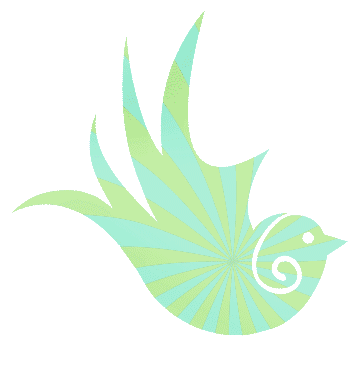The Benefits of Remote Work for Burlington, Ontario Graphic Designers: Why I Made the Switch and Won't Look Back
- Designer
- Feb 3
- 4 min read
Updated: Feb 12
After dedicating years to my role as a graphic designer in Burlington Ontario, I reached a point where I felt my contributions deserved more respect. I wasn’t asking for much—just the opportunity to work fully remotely, a change I believed would enhance my productivity, work-life balance, and overall happiness. However, instead of considering the benefits, management repeatedly pointed to other companies that didn’t offer remote work, remaining adamant that physical presence equated to productivity.
Rather than embracing a flexible, modern approach that could foster a happier and more efficient team, they prioritized control, leading to excessive turnover and a toxic, demoralizing work environment.
A Career Built on Autonomy and Results
As a senior graphic designer in Burlington Ontario, I’ve had the privilege of working with incredible brands, crafting impactful creative strategies, and contributing to exciting projects. Throughout my career, I’ve been trusted to take a project and run with it—no hand-holding, no micromanagement required.

I’ve always been a YES Girl—the one willing to step up whenever there was a gap to fill. Need a corporate video edited and graphics added, but don’t want to pay an outside company? No problem, I can do that. The web person quit again? No worries, I can update the website and create new pages as needed. The social media person left and won’t be replaced? OK, I guess I’ll handle the social media posts too.
I expected management to acknowledge and recognize that my willingness to say yes was saving them money. Yet, despite handling additional projects, I never received a bonus or any additional compensation for my efforts. With over 20 years of experience, I have the skills to do it all, and the company took full advantage of my vast expertise—without truly valuing my contributions.
Year after year, my performance reviews confirmed this. I was told I was the easiest designer to work with—someone who could take a brief, bring it to life, and deliver high-quality work with minimal revisions.
My efficiency and reliability were seen as strengths—until I asked for something in return.
The Resistance to Change
When I requested fully remote work , I wasn’t asking for a raise or special treatment—I simply wanted to continue working in a way that had already proven successful. But instead of being met with trust and respect, I was met with resistance.
I was originally working in a hybrid model, with two work-from-home days each week. Those days were critical for productivity, work-life balance AND the entire team valued them. Yet, as soon as management realized how important those days were, we found ourselves being threatened every six months with the possibility of losing them—for no reason at all.
The team was performing exceptionally well, and we often questioned why leadership didn’t value us enough to ensure our happiness. Instead, they continuously reinforced their authority to keep us in check. Filling office seats seemed to be their top priority—was that what made management feel more powerful?
This constant instability hurt the department and the company as a whole. With such high turnover in the marketing department, the team was always starting from scratch. Given the complexity of the brands and the intricacies of the company, it took about a year to fully understand the business and its brands. Why didn’t management see this as a problem?
Instead of fostering stability and retaining experienced employees, they chose to create an environment of uncertainty, where employees felt undervalued and disposable.
The shift in attitude was immediate. It was as if valuing flexibility and work-life balance somehow made me less of a team player.
The irony? I had always worked independently with no need for supervision. If anything, remote work would have only enhanced my ability to focus and produce great results.

The Impact of Poor Leadership
This experience highlighted a frustrating truth: bad managers can ruin even the best jobs.
The company I worked for had incredible potential, amazing brands, and a talented team—but no one outside the industry had heard of them. Why? Because instead of fostering a strong, engaged marketing team, leadership focused on outdated office politics and rigid policies that pushed people away.
Turnover was high. Every two years, the entire team changed. Yet, leadership remained untouched, repeating the same mistakes, never taking accountability for why people kept leaving. It was a clear example of how some managers, once they reach a certain level, feel untouchable—no matter how poorly they lead.
Choosing a Better Way to Work
That experience was a turning point for me. I realized I thrive in an environment where I’m trusted to do what I do best—without unnecessary control or outdated expectations.
So, I made a decision: I will only work remotely moving forward.
The best work doesn’t come from being watched—it comes from being trusted, respected, and given the space to create. The future of work is evolving, and I’m choosing to be part of that future—one where... results matter more than simply showing up at a desk.
How many fellow designers can relate to my frustration? Comment below, I'd love to hear about your experiences.
#RemoteWork #WorkFromHome #FlexibleWork #BadManagement #ToxicWorkCulture #LeadershipMatters #TrustYourEmployees #Micromanagement #WorkLifeBalance #CareerGrowth #GraphicDesigner #CreativeCareer #MarketingTeam #DesignLife #RemoteJobs #OfficePolitics #CompanyCulture #WorkplaceHappiness #TrustOverControl #ProductivityMatters #JobSatisfaction #RespectAtWork #WorkplaceWellness #DesignerLife #MarketingLeadership #WorkplaceBurnout #ToxicBoss #BetterWorkCulture #JobFlexibility #FutureOfWork #CreativeFreedom #WorkFromAnywhere #NoMoreMicromanagement #TrustTheProcess #CareerDecisions #EmployeeWellbeing #WorkplaceMotivation

Comentarios